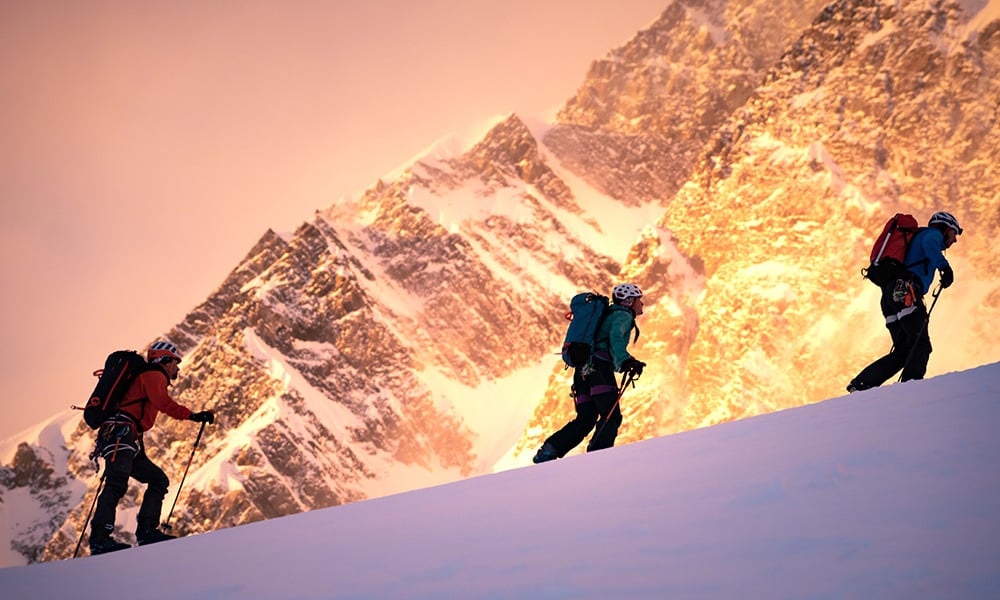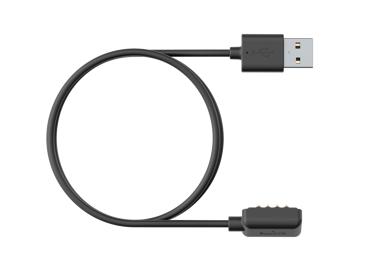With many ski resorts closed this winter due to the pandemic, the backcountry is our one and only saviour. It means hard work, more exploration, memorable adventures, and an opportunity to burn off all those Christmas calories. Crucially, it also means more risk.
We caught up with mountain guide, alpinist, photographer and passionate outdoor educator Mark Smiley about where our heads should be at this ski season. The upshot is if we’re going to be spending a lot more time in the backcountry, then we need to be refreshing our skills now so come pow time we can bring our A game, and not wing it.
To help Suunto users skill up for winter, Mark’s offering a $50USD discount on his new Comprehensive Guide to Avalanche Safety course. The offer expires at midnight on December 20.
Read on for Mark’s 14 tips to ensure you have an awesome and safe backcountry ski season.
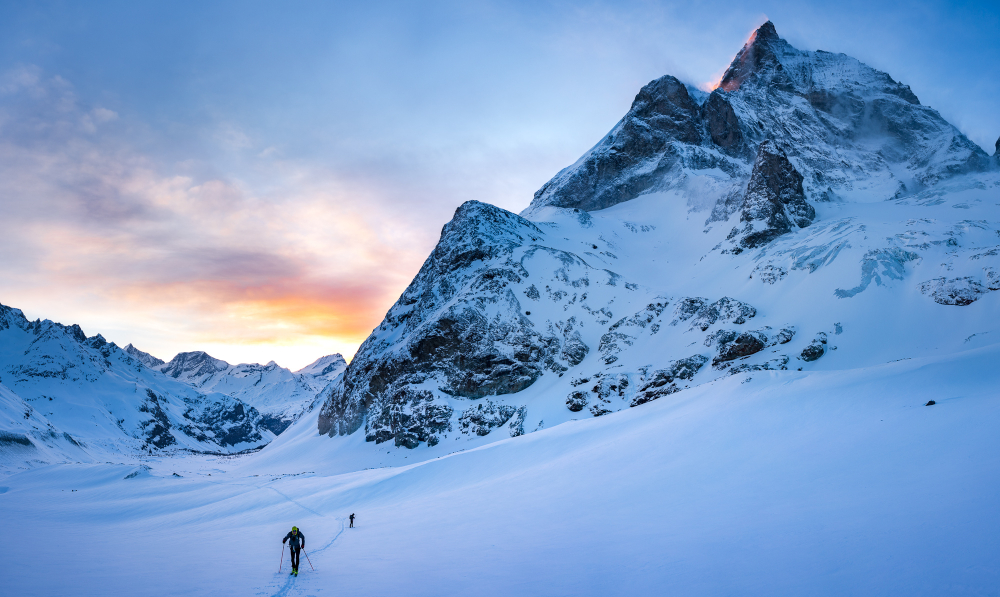
Get your gear now
It’s been a difficult year. Aside from the human and social cost, Mark points out the pandemic has also disrupted supply chains and product distribution. This could mean there’s isn’t the normal level of gear in stock, so it might run out quickly as snow starts to fall.
“Make sure you have the gear, or go out and buy it now before people make a big run on it,” Marks says.
Know how to use that gear
Next up, make sure you know how to use that gear. “I mean really know,” Mark says. “Consider doing a refresher course to ensure you’re skilled up for the winter.” Be a student of the sport by signing up for one of Mark’s online courses designed to make you a safer, faster, smarter skier.
Remember avalanches play for keeps
Heading out into the backcountry is a serious business. “It can be life and death out there,” Mark says. “Don’t approach it in a cavalier way.” Take it seriously and ensure your head is screwed on. Your loved one’s will thank you for it.
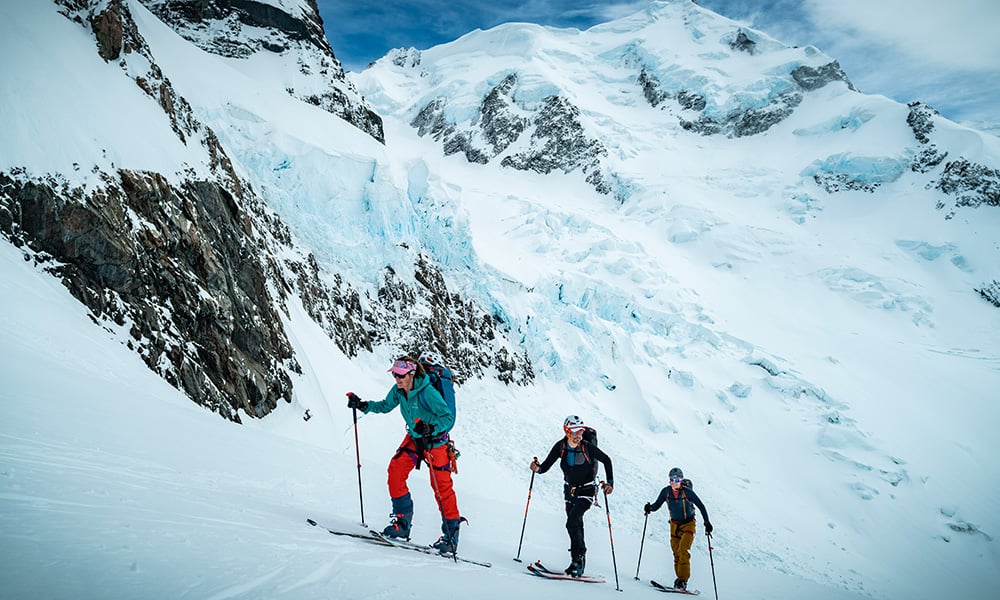
Improve your avalanche skills at a beacon park
Mark strongly advises you and your ski partner to go to a beacon park to improve your search and rescue skills. That way when it’s time to head out into the hills, you’ll truly know what to do in an avalanche emergency and feel more confident. If you don’t have a beacon park nearby, get out in the snow with your friends and play around with your transponder kit.
Realign your expectations
With resorts closed, you’re not going to be gliding down manicured slopes all day. Backcountry skiing is hard work, maybe 75% perspiration, 25% inspiration.
“At the resort you're going to ski down hill like a 1000 times,” Mark says. “Much more than you will backcountry skiing, which is great for keeping the winter weight off!”
Keep that in mind and plan your adventures accordingly.
Pick objectives that match your skill level
Know your skill and experience level, and carefully, maturely, sanely choose tours that match it. Don’t put you or your partner in situations you’re not trained for. If you choose well, you’ll have an awesome time, and will come home with cool video to share.
“And if you’re just starting out, you need to pick non avalanche terrain,” Mark cautions. “There are off piste spots in the backcountry where there will never be an avalanche and you can safely ski in that terrain. Look for gladed slopes with a 25° gradient or less. It can still be a lot of fun to ski those!”
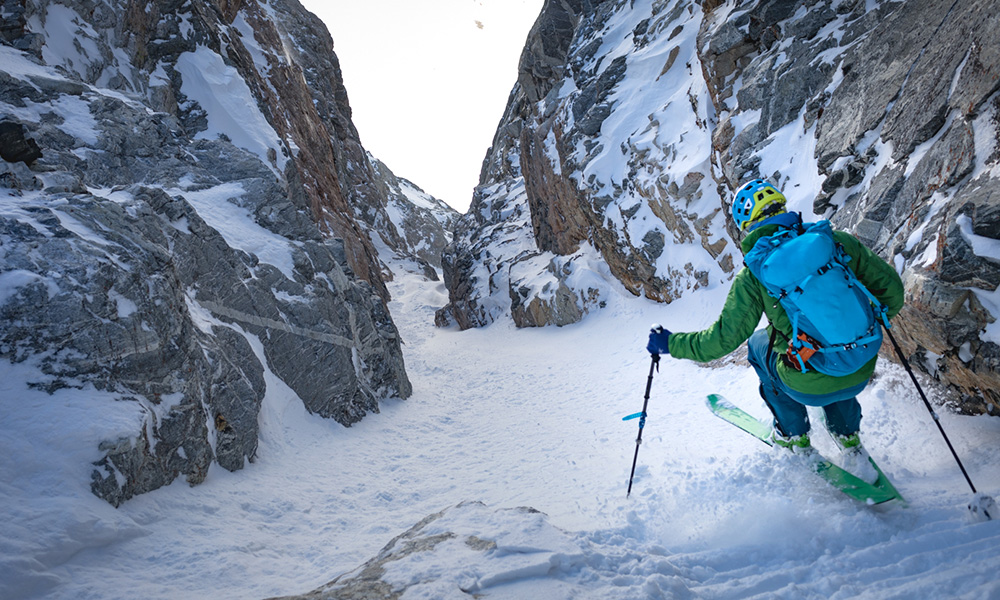
Do your homework
If an area takes your interest, study it thoroughly before heading there to shred. Study the topographical map, read trip and weather reports, contact the local avalanche center and get the what’s what. Find out where the sweet spots are, as well as where the best avoids, and the stay clears are.
“There’s no silver bullet instruction that will allow you to go out and have no risk,” Marks says. “You need to do your homework and never stop learning and educating yourself and keeping in mind that risk is inherent to the activity.”
Find the right partner
Backcountry skiing means heading out with one ski partner at the very least. Choosing the right ski partner for you is important. You want someone who has a similar level of experience, skill and fitness.
“It’s not important how fast or slow you are, but more about matching your abilities with your partners abilities that makes for great partnerships,” Marks says. “Then you can have cool experiences and learn together.”
Look for new lines up
With potentially a lot more people out in the backcountry this ski season, it means the usual skin tracks up will probably become much more well trodden.
“Most slopes will have a standard skin track that has been used in the past most of the time,” Mark says. “If there’s increased traffic, then that skin track might be exposing you to avalanche hazard from above. Be ready and able to take a different track up to avoid that.”
Read our article 7 tips to find a safe track up the mountain.
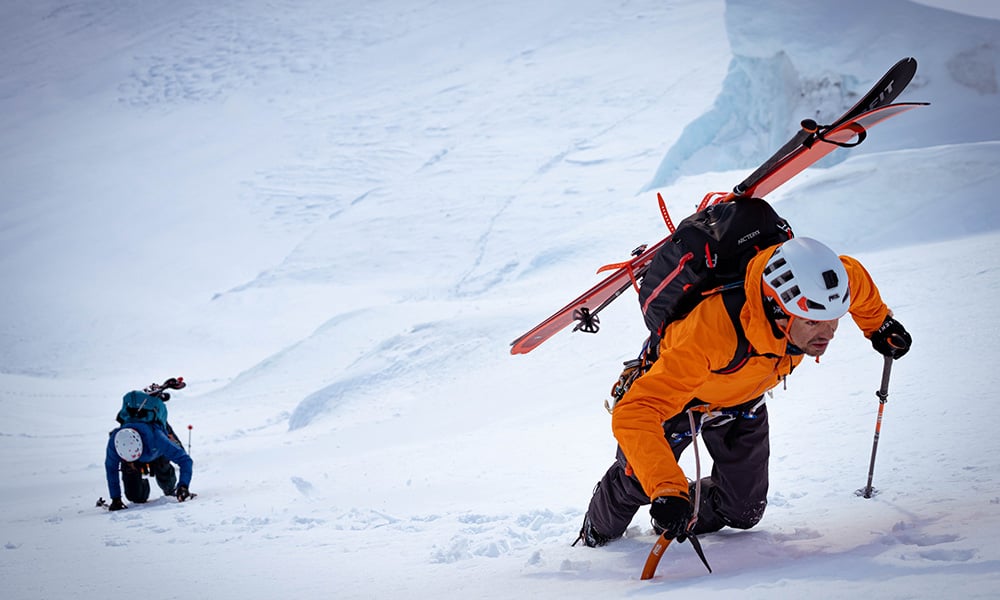
Watch out for fatigue
Remember the backcountry demands much more of you than skiing at a resort. So factor your fitness and endurance level into how you plan your trips.
“Fatigue is a huge factor because it can blur good decision making,” Mark says. “It can turn it from choosing what’s the best in terms of risk assessment into what’s the easiest. You need to make sure you have the fitness reserves to be willing to put the skins back and correct a potential error. You don’t want to be out with someone who’s much faster than you, forcing you to be in intensity zone four most of the day.”
Read about intensity zones here.
Slide your skis
“The movement of ski touring isn’t an inherent skill,” Marks says. “It’s like learning how to surf or swing a golf club – it takes time. There’s a right and wrong way to do it. And if you do it right, it’s way more enjoyable.”
For example, the action of trudging up the mountain can result in epic blisters if done poorly. When you skin your way up, Mark advises to try to slide your skis along the surface of the snow, rather than lifting them off. Sliding them is more efficient, reducing fatigue.
Grams matter
“Lighter packs equal enjoyable tours,” Mark says. “Carry only what you need and leave the rest at home.”
And even if your jacket is made of alien technology, when you’re out ski touring it won’t breathe fast enough.
“You’re going to get really hot, so take that jacket off, and make it more enjoyable for yourself,” he says. “You don’t want to make yourself all sweaty.” Pack it, and only use it to maintain your body warmth when you take breaks.
Share your observations
Be a backcountry angel, and share any avalanche observations with the local avalanche center. This helps to give the forecast as much relevant data as possible, which contributes to keeping people safe.
“A recent avalanche is the biggest, most important piece of data for forecasting,” Mark says. “You don’t need to know all the technical jargon; If you see an avalanche, try to take a 10 second video of it, note the location, and submit that observation to your local avalanche center when you get home.”
Debrief your trips
There’s always something to learn, always a way to get better. Mark points out two important principles to keep in mind: just because you got home safely doesn’t mean you did things right, and “past performance is no guarantee of future results”. Debriefing after trips is a way to keep yourself honest about the risk you are exposing yourself to, and the quality of your decision making.
“Get into the habit of asking yourselves, ‘did we make good decisions today’?” Mark suggests. “Or did you just get lucky? And if you just got lucky, a subsequent question to ask is, ‘when were we most exposed?’. And ask yourself, if you had Groundhog Day how would you lessen that exposure next time?”
All images: © Mark Smiley
Read more articles
8 avalanche safety checks to tick off before the ski season
Know the ropes – staying safe with crevasse rescue online
7 tips to find a safe track up the mountain
